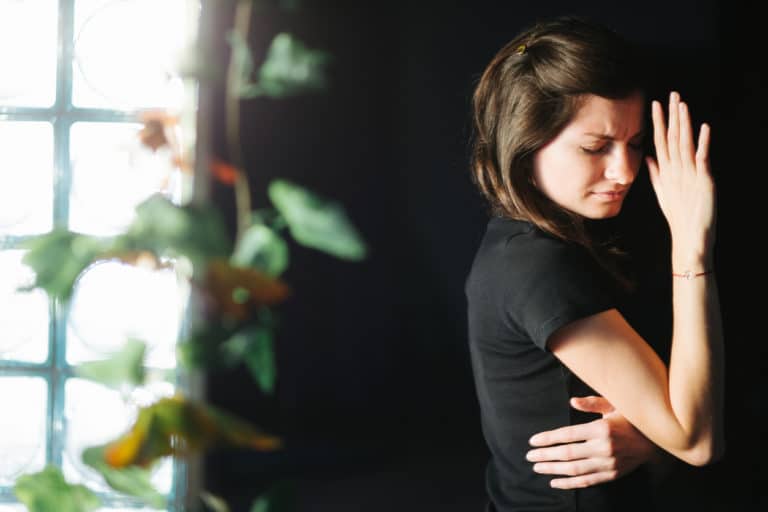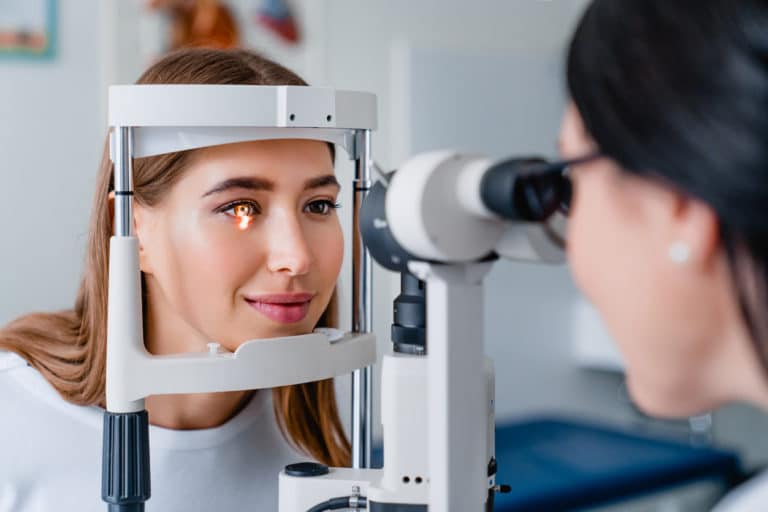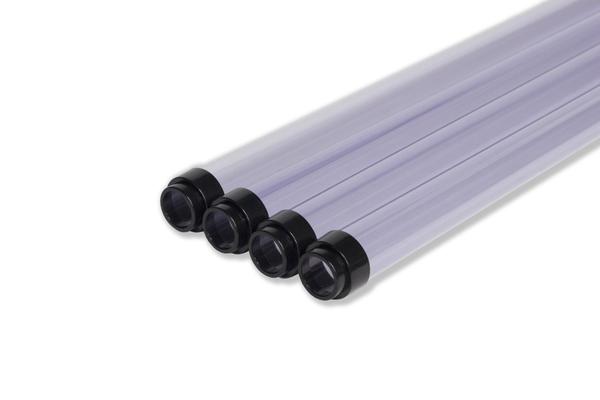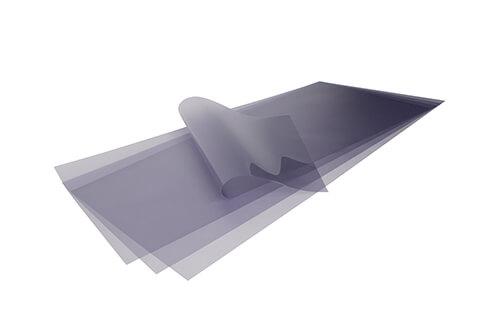Photophobia: Migraines, Headaches, and Eye Pain Due to Light
Light Filters That Treat Photophobia at the Source.
Photophobia is the medical term for people who are sensitive to light. This condition can be episodic, such as when exposed to light the early morning after opening the curtains. It can also be a chronic condition extending long periods.
What Causes Photophobia?

Photophobia is caused by brain disorders, eye conditions, lighting, or a reaction to the medication. When exposed to indoor lighting, or sunlight, people with photophobia experience discomfort, irritation, and sometimes pain.
What makes your eyes sensitive to light? One thing to note is that photophobia is not an illness but a symptom of a related disease. However, some people experience photophobia without any underlying conditions. For instance, if you have chronic migraines, your eyes are more susceptible to experience sensitivity to light.
Also, people with a lighter iris color will experience more hypersensitivity to light compared to people with darker irises. This happens because people with darker irises have more pigmentation to protect them from the glare of light. Although discomfort and irritation are the primary symptoms of photophobia, you can also experience:
- Difficulty reading
- Seeing bright spots, even when your eyes are closed
- Forehead pain
- Tears coming from your eyes
- Squinting your eyes
- Feeling like your eyes are dry
- Lightheadedness
Most times, photophobia will be accompanied by headaches, fatigue, or sometimes nausea.
Up to 80% of people with migraines experience photophobia when under a migraine attack.
Headaches.org Tweet
Common Conditions That Cause Photophobia
Eye illnesses
Eye conditions are the biggest reason for light sensitivity after migraines. Whenever eye-related illnesses cause light sensitivity, one may experience itching, pain, and redness in the eyes. Here are some common eye-related conditions that cause photophobia.
Dry eyes— People with dry eyes lack enough tears to lubricate the eye. Dry eyes may also cause scratching or burning in a person’s eyes which increases light sensitivity.
Dilated pupils— Dilated pupils, do not react to light as normal pupils do. Pupils usually contract when exposed to light to prevent excess light from entering the eyes. With dilated pupils, individuals have more light getting into their eyes, increasing sensitivity. Dilated pupils may result from medication effects, eye injury, or brain injuries/diseases.
Corneal abrasion— Cornea abrasion happens when the clear, protective cover of the eye, the cornea, is scratched. Scratching occurs when foreign bodies such as dust and wood shavings injure the cornea. Although the cornea is not sensitive to light, scratching can cause a lower pain tolerance hence the sensitivity.
Uveitis- This is the inflammation or the infection of the eye. Symptoms include blurred vision, pain, and redness.
Cataracts— are clouding on the internal eye lens. This clouding causes increased sensitivity to light glares.
Glaucoma— Is a pressure buildup in the eye causing sensitivity to sunlight or indoor lighting.
Brain-related Conditions
Meningitis— Is an inflammation around the brain and spinal membranes caused by bacterial infections. In a study, 88% of children cited light sensitivity as the first symptom of their condition.
Encephalitis— occurs when the brain is inflamed as a result of a viral infection. Because of the disruption in neurological functions, people suffering from encephalitis may experience photophobia.
How to Diagnose Photophobia?

Have you asked yourself, “why are my eyes sensitive to light?” If yes, it’s time to visit your doctor or an opthalmologist. Your doctor will ask a series of questions to understand your condition better. Some typical questions to expect include:
- Do you have any other medical condition such as mental and neurological disorders, or a chronic illness
- What medication are you taking, and are you noticing any effects
- How long and often do you experience light sensitivity and migraines
- Does the light sensitivity cause increased headaches
Your doctor will then conduct a series of physical and eye examinations to find the root cause of your sensitivity to light. If they are concerned about a neurological link, your doctor may perform an MRI.
You may also undergo a slit-lamp exam to examine your eyes and the reaction they have to light. This test involves the doctor using a microscope with a high-intensity light to diagnose. Sometimes, doctors may use a dye called fluorescein to dilate pupils and give a clearer view.
Finally, your doctor may conduct an Ophthalmoscopy test to examine the nerves and retina behind your eyes. This procedure is painless and non-intrusive.
How to Treat Photophobia
There are two aspects to treating photophobia. On one hand, the focus is on treating the underlying conditions, and on the other, offering relief to light sensitivity. In most cases, treating an underlying disease leads to the fading of photophobia symptoms. For example, if dry eyes were the cause of the sensitivity, patients will notice a reduction in light sensitivity after treatment. However, if there’s no underlying condition, and photophobia is the reaction of the wrong light types, one can do a couple of things to reduce the sensitivity. The treatment of Photophobia starts with controlling your environment. Preventing light sensitivity headaches and migraines can start with light filters.
Light-filtering glasses
Wear photochromic lenses
Also known as transition glasses, photochromic lenses turn darker in the sun. Photochromic lenses can help protect you from bright sunlight and reduce the phobia of light.
Polarised sunglasses for the outdoors
Their primary function is to reduce glare from the sun and headlights. For people with light sensitivity, polarised glasses come in handy when driving or spending time outside.
Prosthetic contact lenses for extreme cases
These contact lenses are the last resort for individuals with severe light sensitivity, especially those with albinism. Prosthetic contact lenses reduce the amount of light entering the eye. These contact lenses have to be prescribed by an ophthalmologist after thorough check-ups.
The downside of wearing glasses indoors
Wearing glasses indoors all the time may not be the best solution to dealing with photosensitivity. This can cause your eyes to adapt to darkness, causing aggravating irritation when exposed to even the slightest light. Instead, a light filter for the indoors will be more convenient, as you’ll see below.
Light filters for fluorescent panels
Research has shown that fluorescent and incandescent lights release UV elements which contribute to a severe headache and light sensitivity. One can use light filters to prevent the glares and risks of fluorescent lights. Using light filters will reduce the amount of UV exposure, and in turn, a decrease in light sensitivity and migraines.
Office lighting fluorescent tube covers are versatile, durable solution for standard 4′ fluorescent lamps.
Office lighting fluorescent light covers are designed to cover fixtures that are flush to the ceiling. Works with LEDs too.
Can Anxiety Cause Photophobia?
It’s not yet established whether anxiety is a directly related factor causing photophobia. However, research has shown there’s a link between anxiety and photophobia. This means that people with anxiety are more likely to suffer from photophobia.
Dr. Bradley from Utah University suggests photophobia is likely to happen to people with mental disorders, including ADHD, anxiety, and panic agoraphobia.
Another aspect of the link between anxiety and sensitivity is that one may develop anxiety known as light sensitivity anxiety when dealing with photophobia. This condition manifests itself in nervousness, a light headache, and panic when exposed to bright lights.
Benefits of Naturalux Fluorescent Light Filters

With fluorescent light filters, you’ll remove glare. This means less headaches, eyestrain and fatigue.

Like natural sunlight, our filters can help improve mood, focus and even help with you sleep better at night.
The Link Between Led Lights and Photosensitivity
There’s no doubt that LED lights bring several benefits to the table. But there’s also a dark side to them, concerning our health.
A French ANSES report suggests that intense exposure to blue light in LEDs causes eye damage. LEDs are also a contributing factor to the onset of migraines— a major cause of photophobia.
Since LED lights are found almost everywhere, most people are prone to sensitivity after prolonged exposure.
Signs of Migraines That Aren't Headache
Sometimes migraines do not always manifest in a painful headache as a symptom. This condition of migraine without headache is known as silent migraine. The silent migraine can last anywhere between 5 to 60 minutes.
Although headaches do not accompany silent migraines, they can affect people’s daily lives and inhibit activities like driving. Furthermore, there is no known cure for silent migraines making the lives of those affected difficult.
Some common symptoms of silent migraines include:
- Vomiting and an upset stomach
- Dizziness
- Sore jaw/neck
- Sensitivity to smells, lights, and touch
- Light flashes
Fluorescent and LED lights can further the symptoms of silent migraines as well. You can use light filters to reduce fluorescent glare and UV exposure of these light types.
Can You Have Light Sensitivity with Tension Headaches?
Tension headaches are dull pains accompanied by pressure on the sides and back of the head. The cause of tension headaches is not well-known, but the contraction of skull muscles is a likely cause. Stress is also the number one trigger of tension headaches.
Interestingly, tension-type headaches can cause photophobia in sufferers. This is especially common if the person is exposed to LED, incandescent, or fluorescent light. However, people with tension-type headaches will have less sensitivity compared to those with migraines.
NaturaLux Light Filters to Reduce Photophobia
NaturaLux is an easy-to-install light filter that transforms fluorescent and LED lights to natural light. Not only do they remove glare from your room, but they also reduce light sensitivity and eye strain.
NaturaLux light filter works with both fluorescent panels and tubes. They are built to last you at least ten years, not to mention how energy efficient they are.
Are you looking to reduce eye sensitivity to light? Check out the NaturaLux lighting filters.
Sources
Seidel, Stefan et al. “Psychiatric comorbidities and photophobia in patients with migraine.” The journal of headache and pain vol. 18,1 (2017): 18. doi:10.1186/s10194-017-0718-1
Amarilyo, Gil et al. “Diagnostic accuracy of clinical symptoms and signs in children with meningitis.” Pediatric emergency care vol. 27,3 (2011): 196-9. doi:10.1097/PEC.0b013e31820d6543
Silent Migraine: A Guide | American Migraine Foundation
What Is Photophobia?
Photophobia, despite its name, does not mean a fear of: having your photo taken, cameras, looking at pictures, or of
Options for Employers When An Employee with Migraines Is Missing Work
Medically reviewed and updated for 2024 by Molly Duong, M.D. The American Migraine Research Foundation reports that migraines affect 39
6 Effective Ways To Block Fluorescent Lighting at Work
With more people returning to work from COVID-19 lockdown, employees are noticing how much they hate their office lighting. Overhead
Workplace Accommodations for Light Sensitivity
Light sensitivity, or photophobia, often appears as a symptom for certain medical conditions. This can mean that you are sensitive
Lupus and Fluorescent Lights: Stop Lupus Flare-ups at Work
If exposure to UV light causes your lupus symptoms to worsen, you’re not alone. In fact, there is even a
Lupus Photosensitivity: Fluorescent Lighting Can Intensify Symptoms and Trigger Flares
Most people are aware of the importance of protecting their skin from the damaging effects of the sun. We accept


